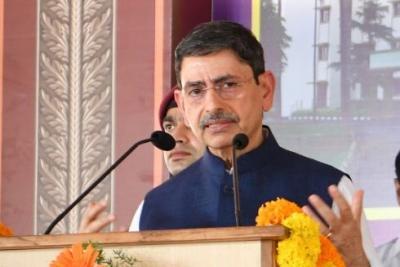
Tamilnadu Governor R.N. Ravi has been receiving a lot of flak after his recent proposal of name-change of Tamilnadu in the Governor’s address to the public representatives of the state. Unfortunately, his proposal to name the state Tamilazagham was not just vehemently opposed by the MLAs in the assembly but also the Chief Minister Stalin, on the floor of the house.
His walk-out following Stalin’s protest through a speech was uncalled for. However, let’s look at the controversy and the history around the name “Tamilnadu.” In 1969, the state was named Tamilnadu by the then Chief Minister Annadurai. But, how did all this happen? Let’s look at the history.
History of “Tamilnadu identity”
Initially, Tamil Nadu was called the Madras Province which also included parts of Andhra Pradesh and Deccan region. This traces back to the days of Periyar who was a strong believer in anti-caste, anti-religion movement and hence, wanted the creation of Dravida Nadu which included the Dravidians (Telugus, Tamils, Kannadigas and Malayalis). This was also when Periyar fought for the self-respect and justice of Tamils and formed Dravida Kazhagam (DK). However, he didn’t want to contest elections following India’s Independence.
This meant that Annadurai had to break off and wanted to contest elections. This led to the formation of DMK by Annadurai who believed that Tamils required a political voice to portray their needs and demands to the country. However, like Periyar, Annadurai did not have strong views on Dravida Nadu and was in fact, silent about it.
But, in 1950, Madras Province continued to make representations on the formation of Tamil Nadu but several resolutions until 1967 fell through, given how the capital city cannot be the name of the state. Meanwhile, the reorganisation of states in India on linguistic basis in 1956 also meant the dream of a Tamilian-native state was not far.
In 1967 when Annadurai became the CM of Madras Province, he ensured that the state assembly passed a unanimous resolution naming the state “Tamil Nadu” and later got the approval of Parliament in November-December 1968. Eventually, on January 14, 1969, Tamil Nadu became a reality.
Political & cultural undertones
Within Tamilnadu, the political power has remained and shifted between the DMK and AIADMK. And, the state, until now has not allowed a third party to enter the struggle for power, despite the presence of other Tamil parties. With BJP trying to make inroads and trying hard to crack the Tamil unity, the controversy of name-change flared up in the state.
The state also has a history of opposing Hindi-imposition. It’s been a long-drawn protest of various political parties in Tamil Nadu. Now, with RN Ravi ruffling a lot of feathers with an unnecessary demand and raking up the name-change controversy, is this the beginning of how BJP wants to break the Tamil unity or will the North-focussed BJP be shown the door by the Tamil, who are known to have staunch beliefs, is yet to be watched out for!











